The third limb of yoga is Asana. This one is probably the most known as those are the poses that everyone else is doing. But what do you know about the asanas that you are doing? In this article, I’m going to give a deeper explanation of the third limb. There is so more behind a yoga pose then you think. Like, do you know the actual reason, the philosophy, behind asana?
If you haven’t read the first two limbs, I’d suggest you start here to get more information about the eight limbs of yoga.
Sanskrit Translation

To begin explaining Asana, it’s good to take a look at the translation from this Sanskrit word. Translated into the English language it becomes: a seat, sitting down, a sitting posture. Of course, there is more explanation to it than just this. Sanskrit is a very complicated language and there are a lot of words that can be interpreted into different meanings.
Sthira-sukham Asanam
One of the verses described in the yoga sutras is Sthira-sukham asanam. It means that every asana, so every position, should be steady and comfortable. When you look at some asanas, it’s quite hard to imagine that those positions can be comfortable. But that is the art of yoga.
To elaborate more on this subject, I’m going to take a closer look at both terms: steady and comfortable.
- Steady Position
If you are doing yoga for a while already, or you are even beginning, you probably know that standing steady in a pose can be quite difficult at times. I, for example, have a lot of difficulties with the balancing poses. Standing steady in them without moving a muscle is seriously hard.
If you do take a closer look at your mind though, you’ll probably notice why you aren’t standing steady in those positions. And it could be almost anything.
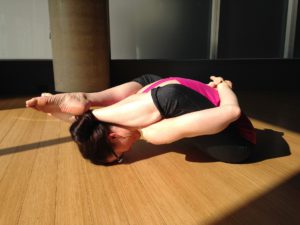
Going into the asana is merely a reflection of your state of mind. It means that if you are standing in one of the positions, that it might be a good idea to be aware of your thinking process. Have you ever tried going in tree pose for example and falling consistently? That’s the moment where you have to look at your thought process. You’ll probably start to notice that every single time that you fall, you’ll be judging yourself. And this is what makes it harder for you to stay in this pose.
It’s a bit like a self-fulfilling prophecy. You go into the pose, you think: I’m not gonna be able to stand firmly. And you won’t. So you’ve proven your point. You’ll go into your emotions and maybe even get angry. Those are the moments where you will notice that it will be hard to keep yourself steady into the pose.
What to do about it? Take a step back, focus on your breathing, and try to eliminate the thoughts that you had that were holding you back. That is the moment where you’ll be going steady into the pose.
2. Comfortable Position
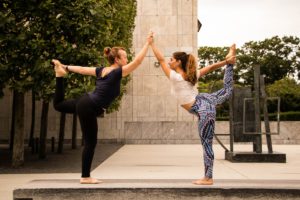
Comfortable is more about how your body feels when you are going into a position. Did you ever go into a position and thought: this doesn’t feel so right? Well, that’s the point sometimes. Being comfortable in a difficult position. It looks like it’s something that only acrobats can do. But that’s not true, you can do it too.
It’s a bit like the situation above, sometimes when you are uncomfortable your thoughts are going wild. Those thoughts will support the fact that you are feeling uncomfortable. But have you ever tried letting go of those thoughts?
Being in a comfortable position also relates to daily life, because that is what yoga is about. Translating everything you are learning on the mat into your daily life. If you master to be comfortable in a position that looks almost impossible, you’ll also master to withstand a lot of uncomfortable situations in your life.
Asana and animals
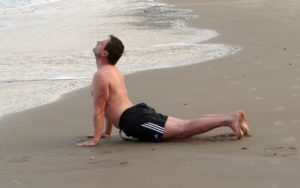
As you might have noticed, there are a lot of asanas that are referring to an animal. You might think it’s quite random, or you might even wonder what came first, the chicken or the egg. However, in this case, the animals were first and then came the poses. It’s quite nice to know that mankind was inspired by the animal kingdom for their names and even poses.
And it makes sense. Throughout history, we’ve evolved into thinking that we are superior and that we are more sophisticated than the animals around us. But truth said, this evolution also made us forget about our natural reflexes. You don’t have to tell a dog to go into downward facing dog, it naturally goes into the pose to stretch itself.
Along the way in our evolution, we’ve lost touch a bit with our natural reflexes. Animals know how to use their bodies to shake off trauma, to relax, to stretch, etc. And that’s why we copied some of those poses for our benefit. I love the Cow Face pose I have to say. There are a lot of animal yoga poses, so please let me know your favorite one in the comment section down below.
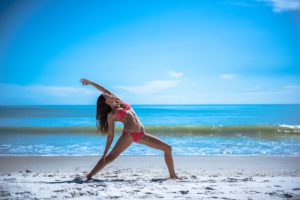
Asana in Daily Life
Animals don’t have a mat to practice yoga on, so that means that we also could implement the yoga poses in our daily lives to give us a little stretch during the day. It’s not that hard and you’ll find many occasions where you can go into a position without anyone even noticing it.
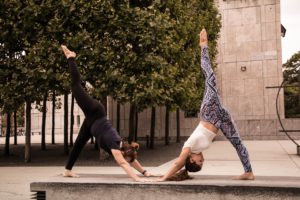
I’m saying this following all the above in this article. It’s good that you are doing yoga on the mat, but it’s just a reflection. With this, I mean that everything you are learning about yourself on the mat, you need to take off your mat as well. This doesn’t only include the poses of course.
By doing yoga you are watching your mind and body. This means that while you are doing your daily things, you should be as aware of what you are doing like you are on your mat. This can go from your process of thoughts while you are cleaning, up to your posture while you are standing in line in the supermarket.
At some point, I started going into Half Moon pose every time I was picking something up from the floor. Just for a couple of seconds. Okay, not the heavy things, just the small things. This I started doing because I felt that every time I picked something off the ground, my back wasn’t aligned properly when I just bent over. While going into this pose, even during my daily chores, made that I had an instant stretch of my spine and it caused me fewer back issues as well.
I’m not saying now that everyone should go into half moon pose every time you pick something up. It’s just an example of the many things you could do to integrate yoga into your daily life.
Conclusion

This was it for the third limb of yoga. Asana is a well know limb, but it’s good to be aware that this isn’t the only one. Next time we’ll be talking about pranayama and I’ll even explain most of the breathing techniques available.
If you have more questions or you’d like to share your experience with the asanas, please leave a message down below in the comment section.
Nama-stay wonderful!


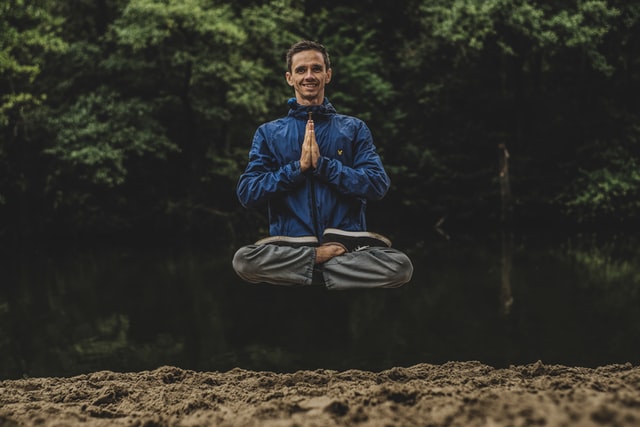
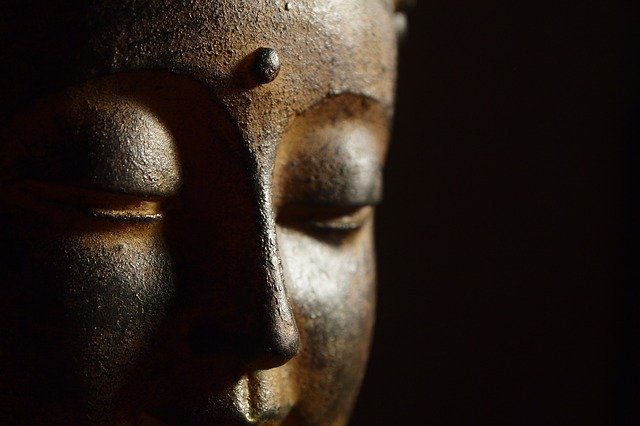
At the fitness centre, we were told that we are going to be learning about the Asana for the next class and that is why to be ahead of the class, I have decided to learn about it here. It’s true that some of the poses are related to animals. I have never thought about it the way you have presented it here. Very nice to learn that on here and I’m happy that I have learnt a thing or two about the Asana. Thanks a lot.
Hi Henderson, good thing that you are researching already a bit before you are going to your class ;). Hope you will learn even more during the next yoga practice! Thank you for your comment and let me know if you’ve learned something that I didn’t explain here.
Thanks so much for this informative look at Asana. I wasn’t familiar with the literal translation but it helps to make sense of the overall practice of yoga. You are correct that translations can be tricky and there often aren’t direct translations between languages, so I appreciate the extra time you took with this. Looking foward to the next discussion in the series about pranayama!
Hi Aly, Thank you for your comment, I expect to finish the article somewhere next week, if you want you can follow me on facebook and there you will get notified when the article is online!
Wow! Thanks for sharing this and I must say that I found most of the poses in the asanas very difficult because I was introduced to it this week. I never knew they draw the inspirations from animal poses. That is adorable and great. Practising all of these and lead ing about it makes me feel that I have really conquered this very well. Thanks so much for providing this much information on asana. Thumbs up
Thank you for your comment Shelley, there is a lot more to write about of course, like why a lot of poses are named after the gods, but I thought for now doing a small bit about animals was more entertaining :).
Frim information gathered about yoga, it seem really beneficial for the health of an individual. Reading through this post have given me a better understanding about yoga as i have heard about the names of these poses before now but don’t really know why every pose has a different name, for me I just call it yoga exercise. I’ll love to read about the first two limbs, this is my first times and seeing the first two would help me gain more knowledge. Where can I find it?
Hi Chloe, the first limb of yoga you can find here, this one is yama, you’ll find also a small explanation about the eight limbs. And the second one you can find here, niyama. And thank you for pointing out that I forgot to put my links in, whoops :D.
It’s interesting to read here that a lot of the yoga poses come from animals, and it seems if you watch animals they seem to know all the right ways to stretch their bodies. So taking lessons from them isn’t a bad idea.
I like to go to yoga from time to time but I am very stiff so some of the poses are very painful to do. I know I really should go more often as my stiffness would probably ease. Would you recommend that people with very tight hamstrings do yoga?
Hi Michel, of course people with tight hamstrings can do yoga, and I suggest they also do it. However, they should be a bit more careful. There is one tip I’d like to give you, to make sure you don’t overstretch your hammies; Bend your knees! Every time you feel a stretch on your hamstrings, bend your knees slightly, that will take the pressure off and makes it less painful for you!
Excellent article on Yoga,the deep exercise is very good for the body and personally I love the Yoga style of exercise,its makes my body fit and also builds my stamina,the point mentioned is great patterning to posture:comfortable is more about how your body feels when you are going into a position,yes its true,another thing I personally observed whenever I do the Yoga is adequate breath,and I enjoyed doing this type of exercise,the write-up is educative,thank you for sharing.
Hi Abayomi, thank you for sharing your own experience! Next article will be about Pranayama, there is so much we can do with are breathing that we aren’t even aware of!
Hi! I didn’t know the relationship between failing at a pose and what’s going on in our head. Most of the time we think it’s just that we’re not experimented enough to do the pose.
Thank you for making application to daily life were there are difficult situations and we’d think it’s impossible to remain steady in a position. In these circumstances we must review our thoughts. Thanks.
Hi Henry, I’m glad you liked the article and stay tuned for more philosophy about yoga!
I am one who enjoys physical work-out, be it a walk in the park or jogging. I really enjoyed reading this article. In my opinion, your post basically is saying yoga is really an everyday natural process, for example, we watched an animal perform a natural act and the human mind emulates the move naturally.
I have learnt so much from your sharing of this article. It brings to mind that although I might think I am not exposed to yoga, I have in a very subtle way, even by the simple stretches i find myself doing.
I particularly like the idea of bending in the half moon position when picking up something as this will give an instant stretch of the spine which is lessening back issues. Thanks for this very insightful post and I look forward to reading more from you.